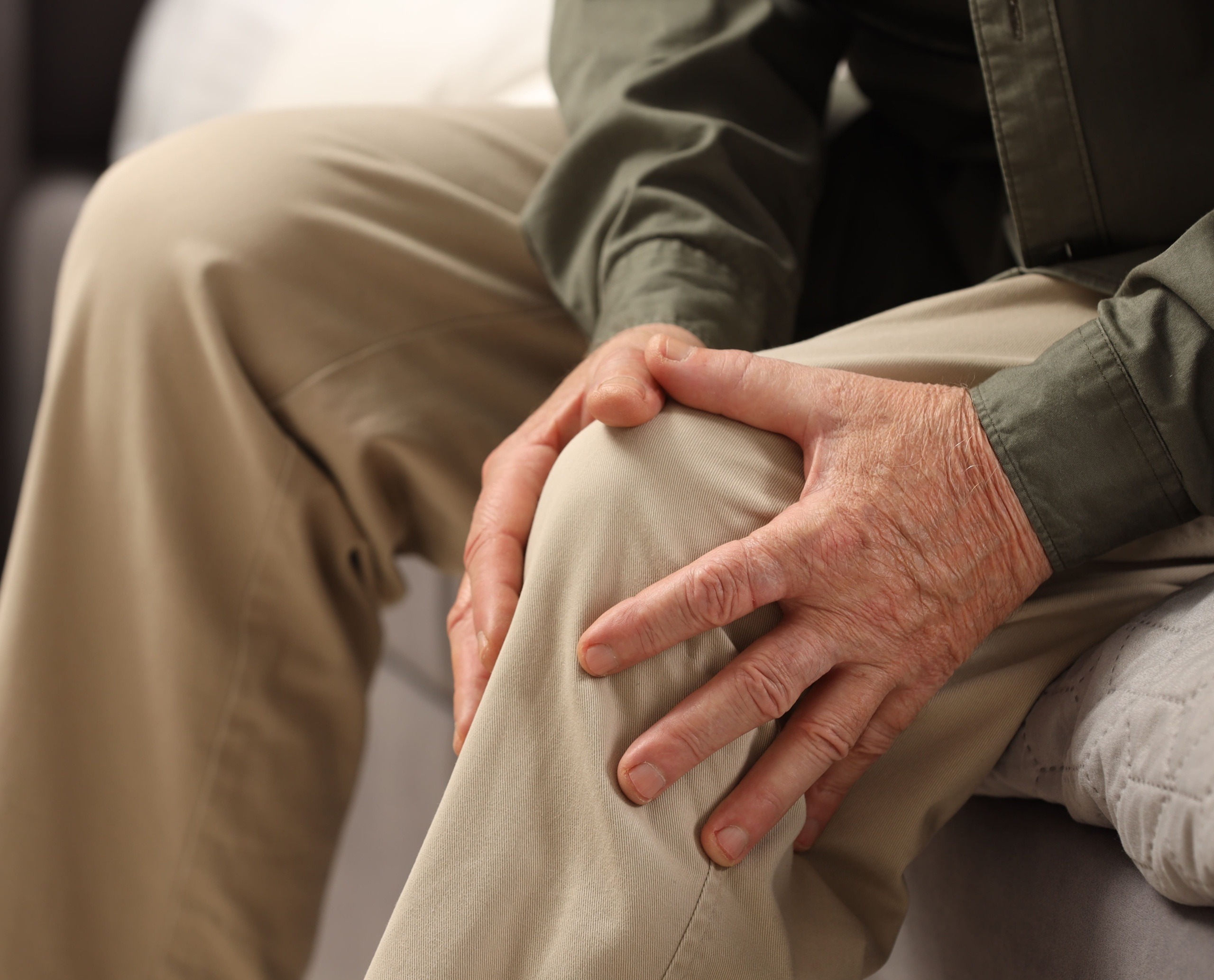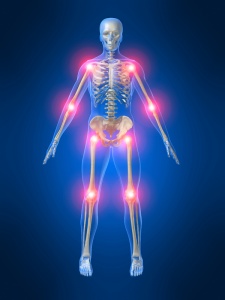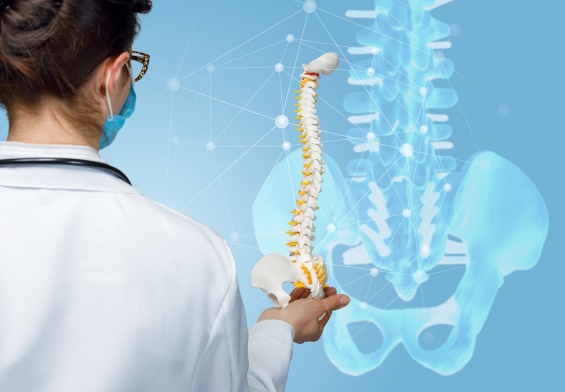Joint pain is a common complaint across all age groups, but it can be especially challenging for older adults and seniors. Maintaining an active lifestyle and managing daily tasks become more difficult when your joints ache and stiffen. This blog post explores the different types of joint conditions, their causes, and how to manage them effectively. We’ll also explore specific considerations for Maryland seniors living with joint pain.
Understanding Common Joint Conditions
- Rheumatoid Arthritis: This autoimmune disease attacks healthy tissues in the joints, causing inflammation, pain, and stiffness. While the exact cause remains unknown, risk factors include genetics, hormonal changes, and certain infections. It’s important to note that rheumatoid arthritis affects people of all ages, but it’s more prevalent in middle-aged adults and women.
- Osteoarthritis: The most common form of arthritis, osteoarthritis is a degenerative condition caused by wear and tear on the joints. Cartilage, the cushioning material between bones, breaks down over time, leading to bone-on-bone friction and pain. While age is a major risk factor, osteoarthritis can also develop due to weight, previous injuries, and repetitive stress.
- Gout: This sudden and intense joint pain arises from a buildup of uric acid in the body. When uric acid crystals accumulate in the joints, especially the big toe, they cause inflammation and excruciating pain. Factors like diet (excessive alcohol consumption), weight, and certain medical conditions can contribute to gout attacks.
- Bursitis: This inflammation of the bursae, fluid-filled sacs cushioning joints, often results from overuse, injuries, or underlying conditions like arthritis or gout. Bursitis commonly affects the shoulders, knees, elbows, and hips, causing pain, swelling, and stiffness.
When to Consult a doctor
Don’t wait for joint pain to become debilitating before seeking medical attention. Here’s when consulting a doctor or orthopedic surgeon is crucial:
- Persistent Pain: If you experience joint pain that lasts for more than a few days or weeks, especially if it’s accompanied by swelling, redness, or warmth.
- Limited Mobility: Joint pain that significantly restricts your range of motion or makes it difficult to perform daily activities is a cause for concern.
- Fever or Unexplained Weight Loss: These symptoms, along with joint pain, could indicate a more serious underlying condition.
- Joint Deformity: Any visible deformity or misalignment in the joint should be evaluated by a doctor.
- Sudden and Severe Pain: A sudden onset of intense joint pain, particularly in the big toe, could be a gout attack and requires prompt medical attention.
Living with Joint Pain: Practical Tips
- Early Diagnosis and Treatment: Consulting a doctor or orthopedic surgeon promptly upon experiencing joint pain is crucial. Early diagnosis allows for prompt treatment and management of the underlying condition, minimizing future complications.
- Pain Management Strategies: A combination of approaches can effectively manage joint pain. Over-the-counter pain relievers, topical creams, and prescription medications can provide relief. Physical therapy strengthens muscles surrounding the joint, improving stability and reducing pain. Maintaining a healthy weight reduces strain on joints.
- Lifestyle Modifications: Certain lifestyle changes can significantly improve joint health. Regular exercise, focusing on low-impact activities like swimming, walking, or yoga, promotes flexibility and strengthens surrounding muscles. Maintaining a healthy diet rich in fruits, vegetables, and whole grains provides essential nutrients for joint health. Additionally, applying heat or ice packs to affected joints can offer temporary pain relief.
Considerations for Seniors with Joint Pain in Maryland
According to the Maryland Department of Aging, 23.1% of adults in Maryland aged 50 and over have arthritis, highlighting the prevalence of joint conditions in the senior population. This can significantly impact their independence and quality of life. Here’s how Maryland seniors with joint pain can navigate these challenges:
- Fall Prevention: Joint pain and stiffness can increase the risk of falls in seniors. Implementing fall prevention strategies like installing grab bars in bathrooms, using non-slip mats, and improving home lighting can minimize fall risks.
- Assistive Devices: Utilizing canes, walkers, or other assistive devices can significantly improve mobility and independence for seniors with joint pain. Consulting an occupational therapist can help determine the most appropriate assistive device for individual needs.
- Mental and Emotional Well-being: Chronic pain can take a toll on mental and emotional well-being. Seniors with joint pain may experience anxiety, depression, or social isolation. Joining support groups or seeking mental health counseling can provide valuable support and coping mechanisms.
The Role of Respite Care and 24-Hour In-Home Care for Seniors in Maryland
Living with joint pain can make daily tasks like bathing, dressing, and meal preparation challenging for seniors. Here’s where respite care and 24-hour in-home care services offered by Maryland-based agencies like Homewatch Caregivers can provide invaluable support:
- Respite Care: Provides temporary relief to family caregivers who are the primary source of support for a senior with joint pain. Respite care professionals can assist with daily tasks like bathing, dressing, meal preparation, medication management, and transportation to appointments. This allows family caregivers to take a break, recharge, and avoid burnout. It can be particularly beneficial for Maryland seniors who require assistance during specific times of the day or week, ensuring their needs are met while offering family caregivers a well-deserved respite.
- 24-Hour In-Home Care: Provides a complete care package solution for Maryland seniors with complex needs or those requiring around-the-clock assistance due to severe joint pain. Trained caregivers can provide help with personal care needs, medication management, housekeeping, and meal preparation. This allows seniors to maintain their independence and safety in the comfort of their own homes, even with limitations caused by joint pain.
Benefits of Short-Term Care and Full-Time In-Home Support for Seniors with Joint Pain in Maryland
- Improved Quality of Life: Both respite care and 24-hour in-home care services enable Maryland seniors with joint pain to live comfortably and safely at home, reducing the need for relocation to assisted living facilities. This familiarity and sense of control can significantly improve their overall well-being.
- Reduced Pain and Improved Mobility: With assistance from caregivers, Maryland seniors can maintain a regular exercise routine and physical therapy appointments. This can lead to improved joint health, reduced pain, and increased mobility, allowing them to participate in more activities of daily living.
- Enhanced Mental and Emotional Well-being: Respite care alleviates caregiver stress, fostering a more positive and supportive home environment for Maryland seniors. Additionally, in-home caregivers can provide companionship and social interaction, combating feelings of isolation and loneliness. This can significantly improve their mental and emotional well-being.
- Peace of Mind for Families: Knowing their loved ones in Maryland are receiving proper care and support, especially when managing joint pain, offers families immense peace of mind.
Final Thoughts
Joint pain is a prevalent challenge, but with proper diagnosis, treatment, and lifestyle modifications, you can manage it effectively and maintain an active, fulfilling life. Remember, you’re not alone. By seeking professional help, implementing the strategies outlined above, and considering respite care or 24-hour in-home care services offered by Homewatch CareGivers, you can overcome joint pain and continue living a life you enjoy.




